How To Use Your Wrist In Badminton
A lot of people use the WRONG wrist movement in badminton, causing them to lose power, control, consistency, deception, and also at times actually cause some pain!
But, the solution doesn’t actually come from your wrist at all.
We’ll now share why your wrist isn’t as important as you think, why your fingers and thumb are important, and crucially, how you can use them to improve your badminton game!
Why Your Wrist Isn’t As Important As You Think
Imagine writing just using your wrist, rather than actively using your fingers.

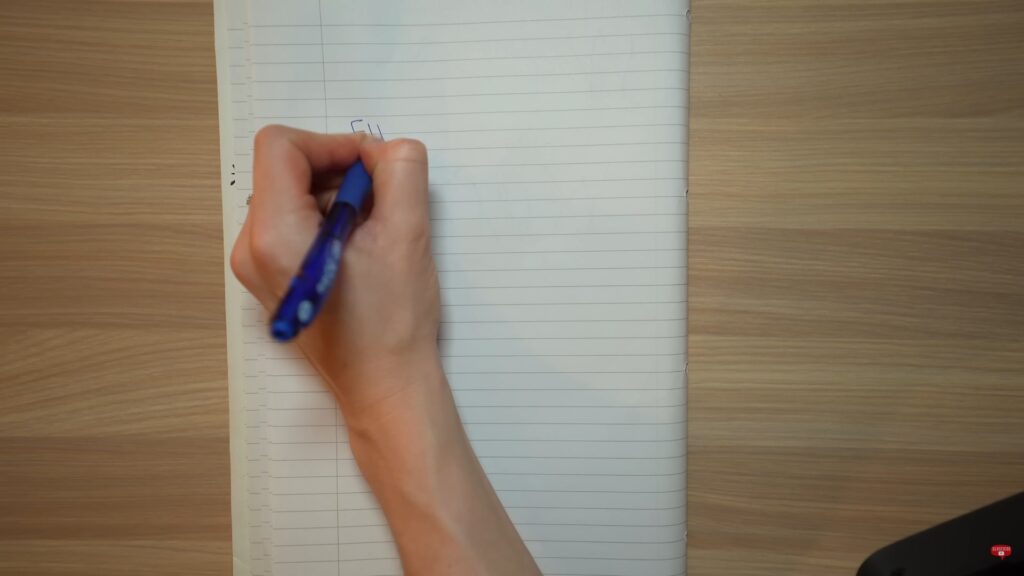
It’s a lot more difficult to control the pen when you’re only using your wrist, and this is essentially what a lot of players are doing on court! Playing badminton, like writing, becomes much easier when you use your fingers and thumb.
The Impact On Power
For example, in your backhand lift or drive, bringing your wrist back too much and then snapping it forwards isn’t actually what generates the power (and it’s probably going to give you a wrist injury)!
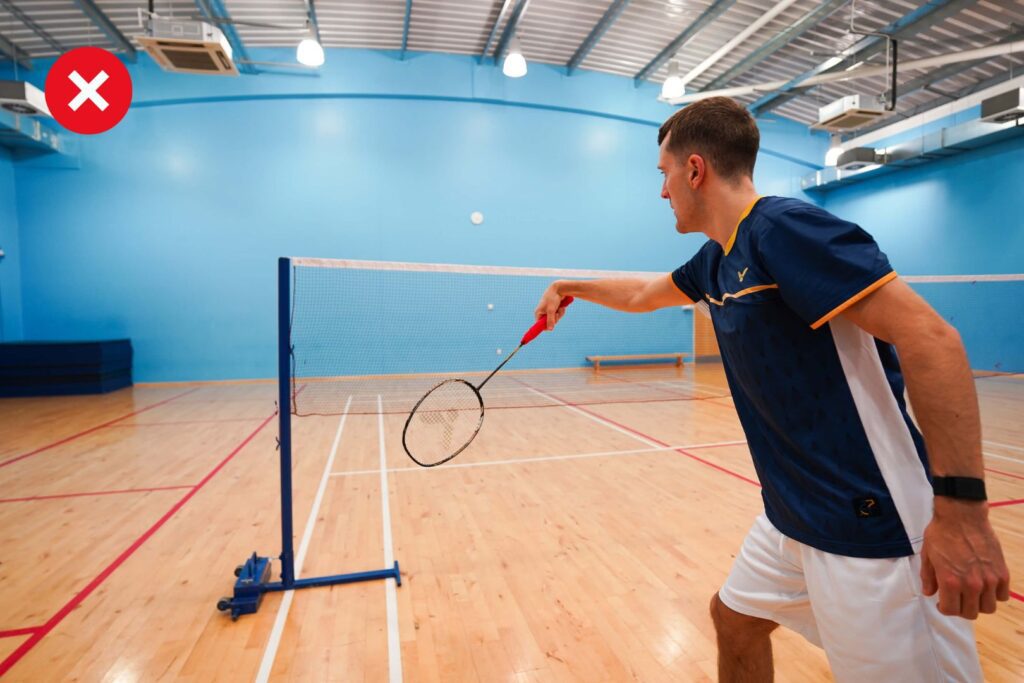
Though you do need to use your wrist a little, you should aim to keep your wrist much flatter, and use your thumb to squeeze against the wide part of the grip and accelerate into the shot.
By keeping your wrist flatter and squeezing your thumb, it also engages your forearm much more which helps add power.

The Impact On Control And Accuracy
For example, in darts, the difference between hitting a triple 20 or just 1, comes down to such small, minuscule movements. They are barely using their wrist, and relying on their index finger and thumb to create ultimate precision!
So in badminton, we need to become experts at using our fingers and thumb to get maximum control and accuracy.
We’ve found that generally, the less your whole body is rotating, the more important it is to use your fingers and thumb as you don’t have the momentum of your body rotating into the shot.
For example, the backhand serve – you need to rely on using the squeeze of your fingers and thumb to add not only accuracy but also power into the serve, especially if it’s a flick.
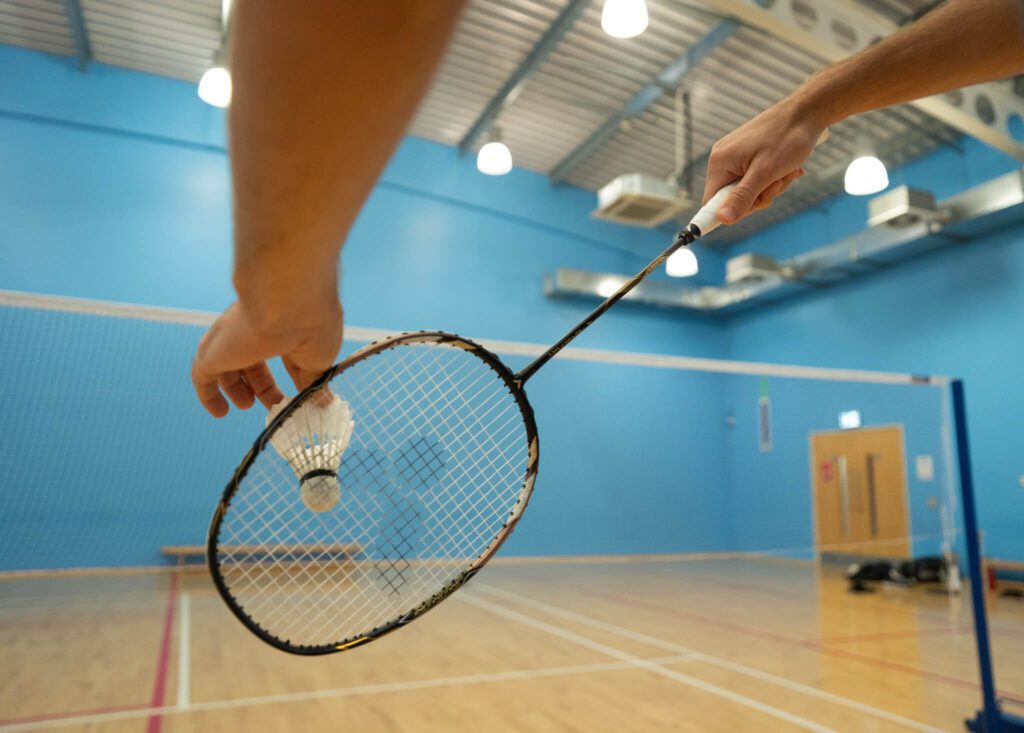
But it’s important to mention – you do still need to use your fingers and thumb when you are rotating!
When you’re smashing or hitting a late backhand for example, you use your fingers and thumb at the final stage of the shot which helps with accuracy and power. Your fingers and thumb aren’t the main component, but it’s a combination of all the factors such as your rotation, footwork, swing speed and timing.
The Impact On Grip Changes
Generally, players who overuse their wrist really struggle to change between the different grips quickly, especially between a forehand and backhand grip!
Using your wrist too much means that you have a bigger followthrough, and often means you can’t change your grip in time for the next shot.
For example, if you hit a forehand drive with a really big followthrough and it comes back at you fast, you won’t have enough time to change into a backhand grip. You will then have to stay in the forehand grip and will NEED to use your wrist to try and create some power in the shot, rather than using your thumb.
💡 The more you use your fingers and thumb, the better you can change between the grips, and this will therefore help your power, control, accuracy and consistency!
How To Use Your Fingers And Thumb
Although we’ve said “fingers and thumb” together throughout this blog so far, there are actually shots where you don’t really use your thumb, and it’s more just there to create a good grip and ensure you don’t drop your racket!
However, you DO use some finger squeeze in EVERY shot in badminton! This is something the best players do really well – whether that’s in their overhead shots, using the squeeze to add power and deception at the last moment, or improving the accuracy of their net kills.
Having a relaxed loose grip right up until the shuttle hits your strings is really important because using your fingers and thumb is the quickest way to twist and turn your racket, compared to moving your whole wrist.
As the shuttle moves so fast in badminton, any wasted time can make a really big difference! So make sure you’re lightly holding the racket and not gripping it too tightly before hitting a shot.
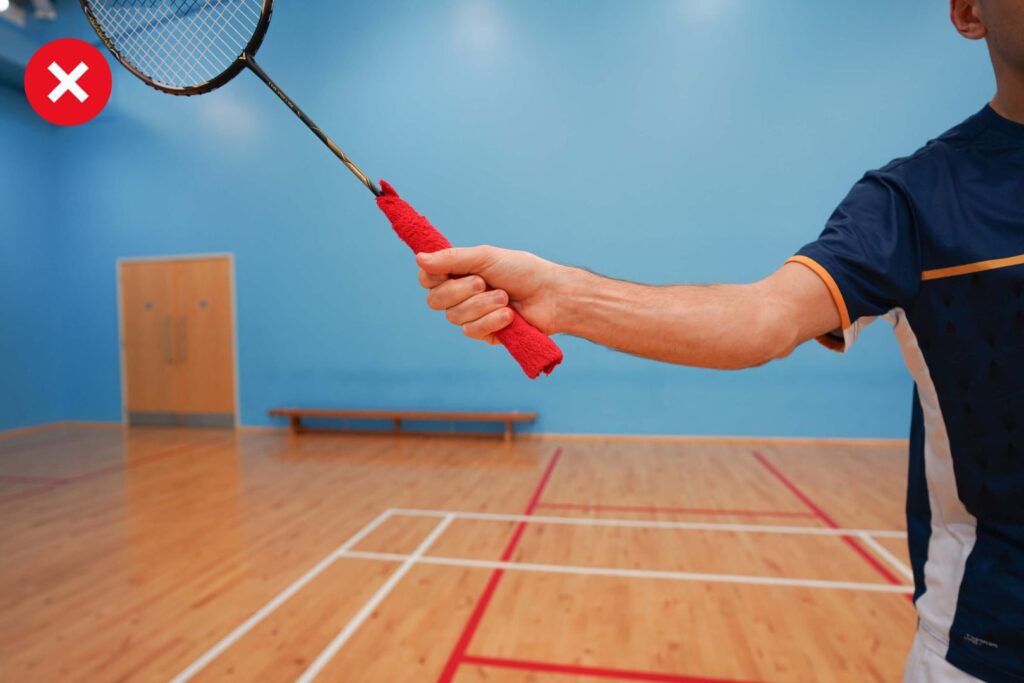
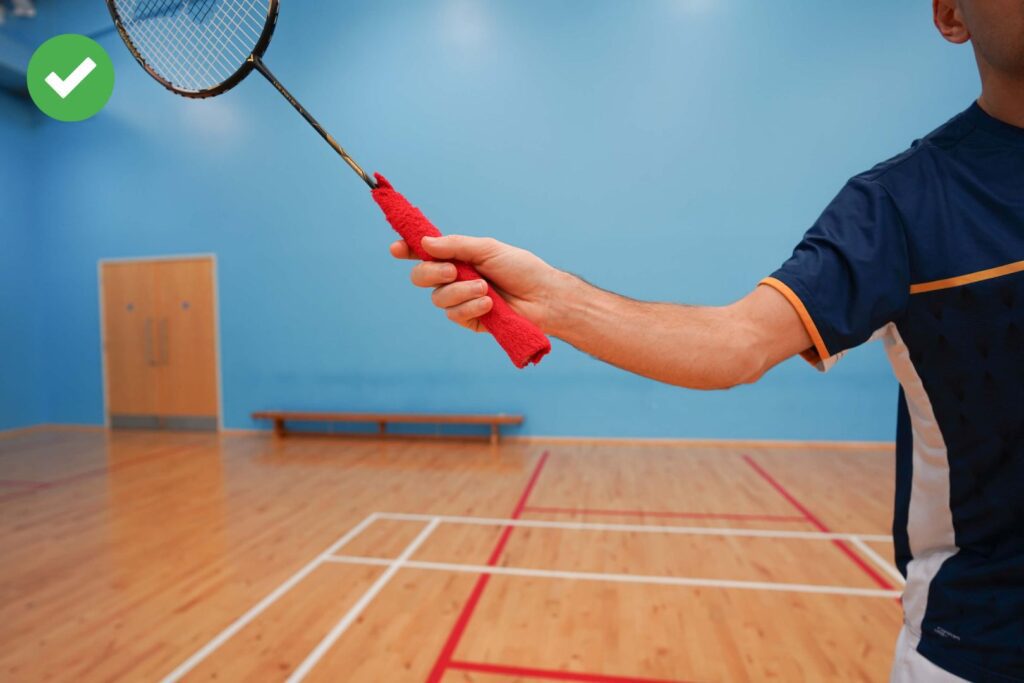
4 Ways To Easily Practice Using Your Fingers And Thumb (And Improve Consistency)
Practice 1 (No Court Or Shuttle Needed)
This practice can be done at home, and you simply need to have your racket in hand, then practice changing between a forehand and a backhand grip and squeezing to hit a shot after each grip change. You can do this whilst replicating hitting net kills, drives, lifts, or net shots.
This might seem basic (and also boring!), but this is a great way to practice not only changing between the different grips, but also keeping your fingers and thumb loose and then squeezing them to recreate the feeling of adding power into the shot!
Practice 2 (No Court Needed)
Hit a shuttle up continously, and see how short you can make the swing whilst getting as much height as possible. We’d recommend doing it on the forehand side, then backhand side, and then alternate between the two!
This will really encourage you to use your finger squeeze and also your thumb when on the backhand side!
💡 A key tip is that if you find yourself reverting back to using your wrist when doing this practice, then don’t hit the shuttle as high as this will give you less time and almost force you to use a shorter, more efficient action!
Practice 3 (On-Court)
Here you want to work on the different shots and skills that you regularly play in badminton.
Below Net Height
Experiment with using your fingers and thumb to generate power and control in your lifts.
This can be done by repeatedly lifting to a partner who is dropping. If your partner cannot drop consistently, or you would like more time for your own intrinsic feedback in between shots then they can throw shuttles over the net to replicate this. They would throw the shuttle like a dart – making sure they are using their fingers of course
We know a lot of people struggle on the backhand lifts in particular so one way to improve this is to take the 3 fingers off the racket (shown in the image below) for the entire duration of the shot!
This gets you used to only using your thumb and index finger. Once you’re used to this, you can add the 3 fingers back on to help with a little more control.

You can also practice your net shots, experimenting with how much you need to squeeze your fingers and thumb to hit a tight net shot from varying positions.
💡 We’d advise doing this practice with some movement - don’t just stand still as this isn’t what you’d be doing in a game. Adding in footwork provides you with momentum that naturally adds some power into your shot, so it’s important to get used to this!
Above Net Height
You’ll then want to experiment using your fingers and thumb in the rear court and in other shots above the height of the net.
Here’s a couple of examples for why using your fingers and thumb are so important in the rear-court:
- The attacking punch clear – you act like you’re going to play a drop shot or smash, and then a lot of the deception comes from you squeezing your fingers and thumb at the last millisecond to hit the punch clear instead.
- The smash – experiment with how much and when you need to squeeze your grip, and what you should do with your wrist too. Just look at how relaxed Praveen Jordan is before hitting a smash in the image below!
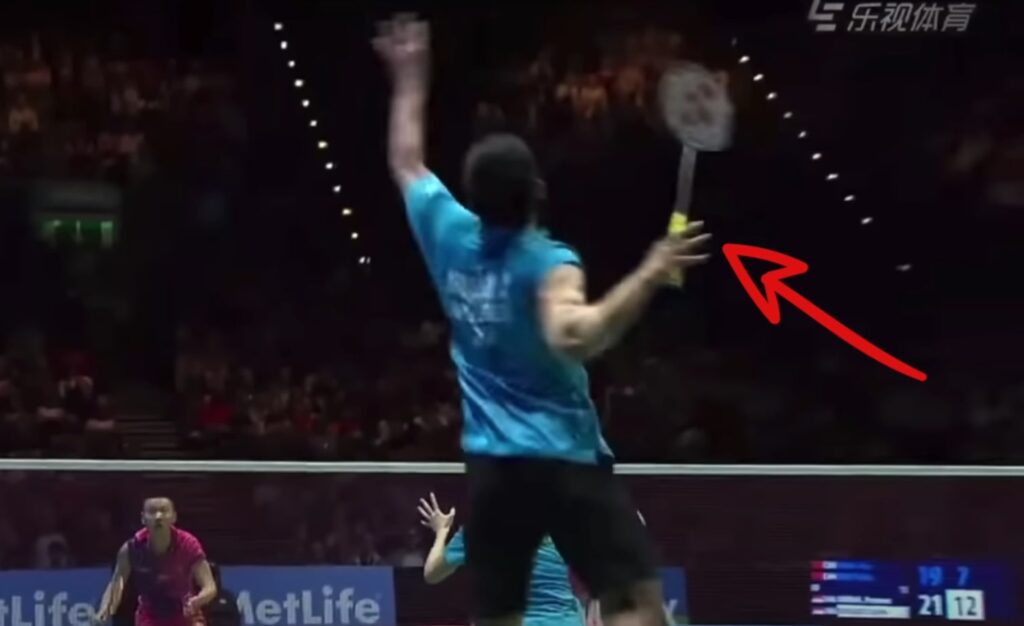
Practice 4 (On-Court Single Shuttle)
One person is at the net tapping the shuttle down to the other person who is defending on a half-court. This is a great exercise as both people are constantly using their fingers and thumb – and if you’re not, then it’s not going to work as you won’t have the necessary accuracy, power or control!
This is for 2 main reasons:
- If you hit a shot in defence and use your wrist too much, then your racket swing will have a bigger follow through. This means you have a longer distance to get your racket back in its ‘ready position’ and you’ll be put under more and more pressure and therefore not be able to keep the rally going!
- You also need to be able to play your defensive shot with enough power to enable the net player to keep hitting down. Being able to defend with power is so important if you want to improve your badminton as it enables you to play much better shots from a variety of positions!
Learn More
We hope you’ve now learned more about how to use your wrist, fingers and thumb in badminton to help you generate power, control, consistency, deception, and also eliminate any wrist pain!
If you’d like to see more visual explanations of the practices and points we’ve discussed, you can watch our YouTube video below!


